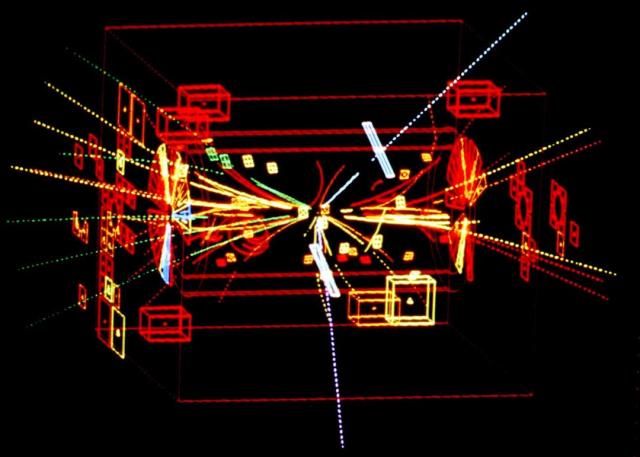W and Z particles discovered

In 1979, CERN decided to convert the Super Proton Synchrotron (SPS) into a proton–antiproton collider. A technique called stochastic cooling was vital to the project's success as it allowed enough antiprotons to be collected to make a beam.
The first proton–antiproton collisions were achieved just two years after the project was approved, and two experiments, UA1 and UA2, started to search the collision debris for signs of W and Z particles, carriers of the weak interaction between particles.
In 1983, CERN announced the discovery of the W and Z particles.The image above shows the the first detection of a Z0 particle, as seen by the UA1 experiment on 30 April 1983. The Z0 itself decays very quickly so cannot be seen, but an electron–positron pair produced in the decay appear in blue. UA1 observed proton-antiproton collisions on the SPS between 1981 and 1993 to look for the Z and W bosons, which mediate the weak fundamental force.
Carlo Rubbia and Simon van der Meer, key scientists behind the work, received the Nobel Prize in physics only a year after the discovery. Rubbia instigated conversion of the SPS accelerator into a proton-antiproton collider and was spokesperson of the UA1 experiment while Van der Meer invented the stochastic cooling technique vital to the collider’s operation.